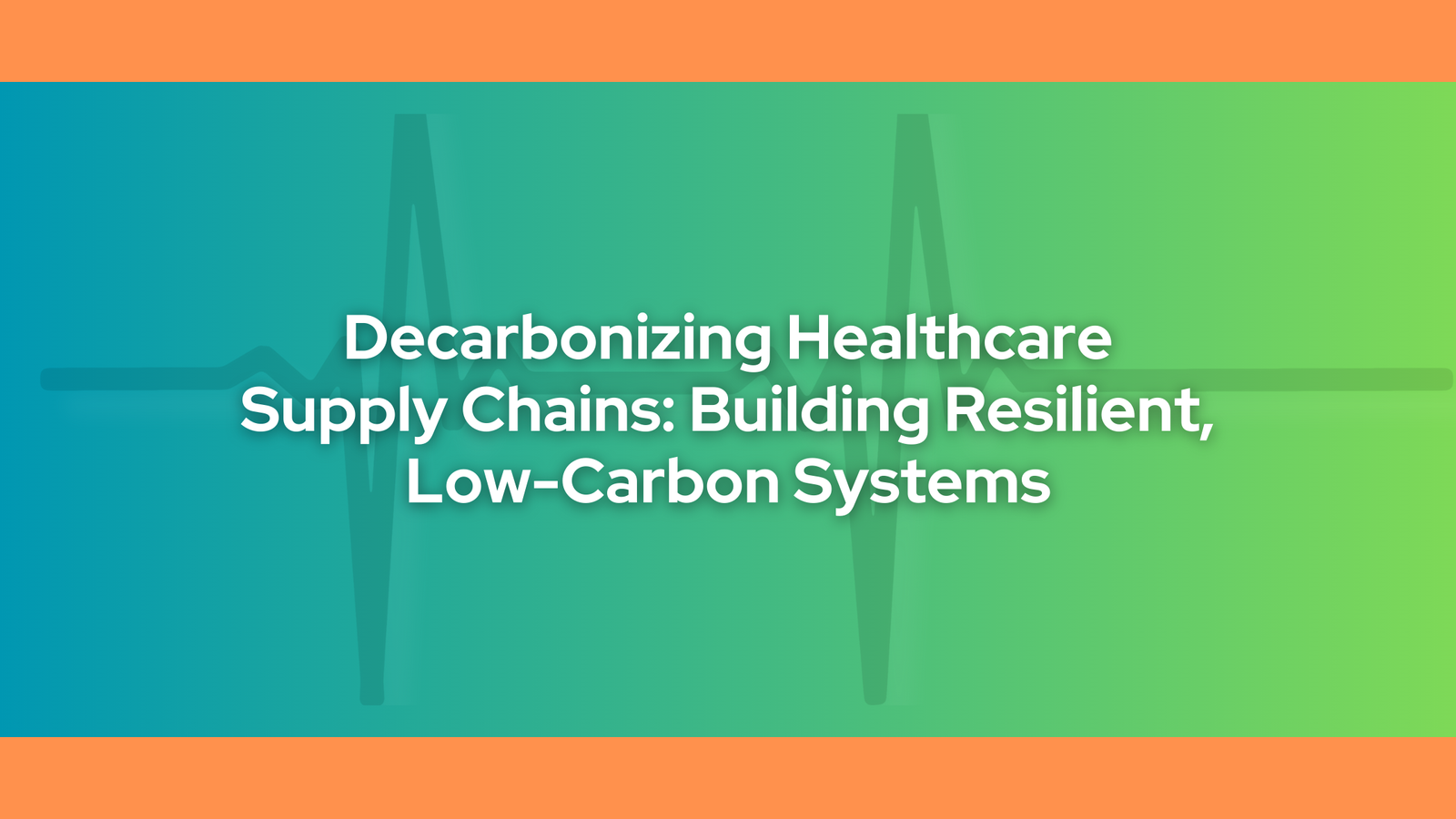
A thriving healthcare system that is accessible to many reflects a country’s economic status and social and political commitments. While the healthcare industry is crucial to saving lives and maintaining everyone’s well-being, its carbon footprint is also exacerbating the effects of climate change. Procurement professionals and decision-makers must prioritize decarbonizing healthcare supply chains and strengthening their resilience to climate-related disruptions as the climate crisis worsens. Long-term sustainability, risk mitigation, and environmental impact reduction are all possible with this dual strategy.
In a report from Health Care Without Harm, the healthcare sector is responsible for 4.4% of global greenhouse gas emissions. A big part of this emission is from the supply chain, including the production, transportation, and disposal of medical products. These all rely heavily on carbon-intensive processes, which can further contribute to pollution and climate change.

In hospitals, clinics, and other healthcare facilities alone, it is obvious how much energy they use and how much waste they make. From relying on single-use plastics for procedures to avoid cross-contamination to disposing of medical wastes in landfills or by incineration, it is evident how much the healthcare supply chain contributes to carbon emissions. While these procedures are needed for hygienic purposes, health reasons, and patient safety, they also cause a severe impact on the environment.
According to a blog from the Asian Development Bank, over 70% of healthcare emissions are produced in the supply chain. Making the switch to low-carbon supply chains is crucial for reducing climate risks and increasing resilience to upcoming disruptions. Add to that, for vulnerable nations in Asia and the Pacific, expanding resilient and low-carbon healthcare supply chains will be crucial to attaining universal health coverage and fair access to healthcare.
South Korea has adopted green public procurement laws that encourage resource efficiency and drastically cut carbon emissions. In one case study, South Korea’s National Health Insurance Service (NHIS) purchased 3,697 indoor LED lights with an ecolabel, which generated 57,158,747 KRW in environmental benefits. NHIS’s internal green procurement criteria served as the impetus for mandating public organizations to purchase green items and the inclusion of LED lighting in NHIS’s energy-saving action plan.

Promoting low-carbon supply chains, especially in the Asia-Pacific, requires public procurement strategies. The International Green Purchasing Network (IGPN) emphasizes how important it is to match decarbonization objectives with procurement strategies. Some of the main suggestions are offering financial rewards to suppliers who implement sustainable practices, establishing quantifiable carbon reduction goals to guarantee responsibility, and integrating climate-related requirements into all phases of the procurement process. These actions encourage environmental responsibility in public purchases while advancing sustainability.
Efforts should be taken to create a more sustainable healthcare supply chain while maintaining lower carbon emissions. These actions include:
Decarbonizing healthcare supply chains is a strategic necessity as well as an environmental one. Procurement experts and decision-makers need to embrace sustainable approaches. This can guarantee resilience and lower emissions as climate change continues to upset supply chains.
The healthcare industry can set the standard for creating resilient, low-carbon supply chains. It can do this by taking inspiration from successful green procurement projects, utilizing creative solutions, and bolstering legislative frameworks.